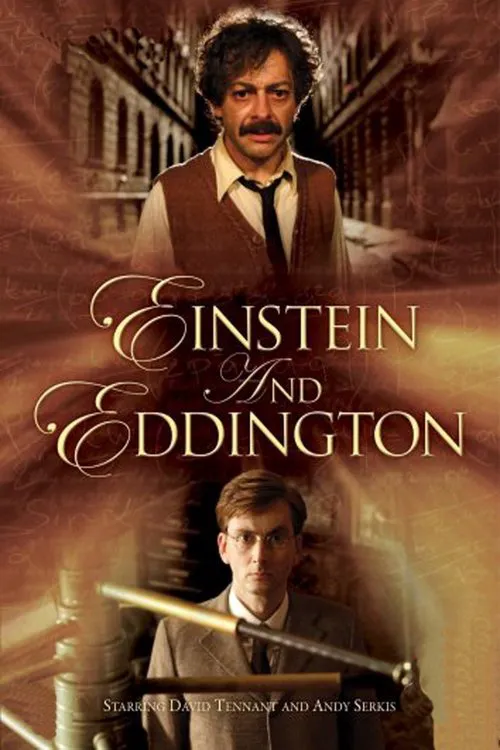Einstein and Eddington

Plot
In the early 20th century, a brilliant and ambitious Albert Einstein was revolutionizing the world of physics with his groundbreaking theory of relativity. This complex concept was a far cry from the prevailing views of space and time, but Einstein was determined to share his vision with the world. In a twist of fate, a British astrophysicist named Sir Arthur Eddington would become the pivotal figure in spreading Einstein's message to the masses and cementing the German physicist's reputation as a pioneer in the field. Einstein, already well-established in his career by 1915, had spent years perfecting his theory of general relativity. In a departure from traditional notions of space and time, Einstein posited that the laws of physics are relative and dependent on the observer's frame of reference. This mind-bending concept not only challenged the long-held views of classical mechanics but also offered a profound insight into the fundamental nature of the universe. However, in an era dominated by the scientific and intellectual elite of Europe, Einstein's ideas faced skepticism and resistance from the academic establishment. This was largely due to the entrenched views of Sir Arthur Eddington, a renowned astrophysicist at Cambridge University. Despite his initial reservations, Eddington's profound intelligence and unyielding dedication to the pursuit of knowledge soon led him to realize the significance of Einstein's work. As fate would have it, Eddington and Einstein crossed paths in 1915, when the German physicist's theory was still in its infancy. Eddington's subsequent lectures, based on Einstein's ideas, helped to clarify the essence of general relativity for his peers, and in doing so, played a significant role in popularizing Einstein's work among the scientific community. Their interactions also laid the groundwork for Eddington's bold experiment, scheduled for 1919, which aimed to confirm or disprove the validity of Einstein's theory. Eddington's experiment involved measuring the bending of light around the Sun during a solar eclipse. The idea, though ambitious, relied on the assumption that the Sun's mass would warp the fabric of space-time, causing light to bend. By traveling to the West African coast to capture the eclipse on film, Eddington was determined to confirm the predictions of Einstein's theory. This remarkable journey demonstrated Eddington's unwavering commitment to the pursuit of knowledge and his unshakeable faith in Einstein's groundbreaking ideas. Upon returning to Britain, Eddington's photographs revealed the unmistakable signs of the gravitational redshift and the deflection of light. The experimental evidence provided definitive proof of Einstein's theory, earning him international acclaim and cementing his reputation as a visionary in the field. The impact of Eddington's experiment went beyond simply validating Einstein's ideas, as it challenged the conventional understanding of the universe and paved the way for the development of modern astrophysical theories. The significance of Eddington's contribution cannot be overstated. As the first scientist to grasp the full implications of Einstein's theory, he played a crucial role in bridging the gap between the abstract concepts of relativity and the observational evidence required to support it. His unwavering support for Einstein's ideas not only paved the way for their eventual recognition but also laid the foundation for the widespread acceptance of the theory. As Einstein's reputation grew, so did his connection with Eddington. Their correspondence in the 1920s and 1930s offers a fascinating glimpse into the minds of two of the greatest scientific minds of the 20th century. Despite cultural and linguistic barriers, their exchange reflected a deep respect for one another's intellect, driven by a shared passion for the pursuit of knowledge. In the end, Einstein and Eddington's remarkable bond would forever change the landscape of modern physics. The theory of relativity, once considered heretical and revolutionary, had gained widespread acceptance, largely due to Eddington's pioneering work. Their unique friendship serves as a testament to the transcendent power of human curiosity and collaboration, a relationship that will continue to inspire scientists and intellectuals for generations to come.
Reviews
Recommendations




